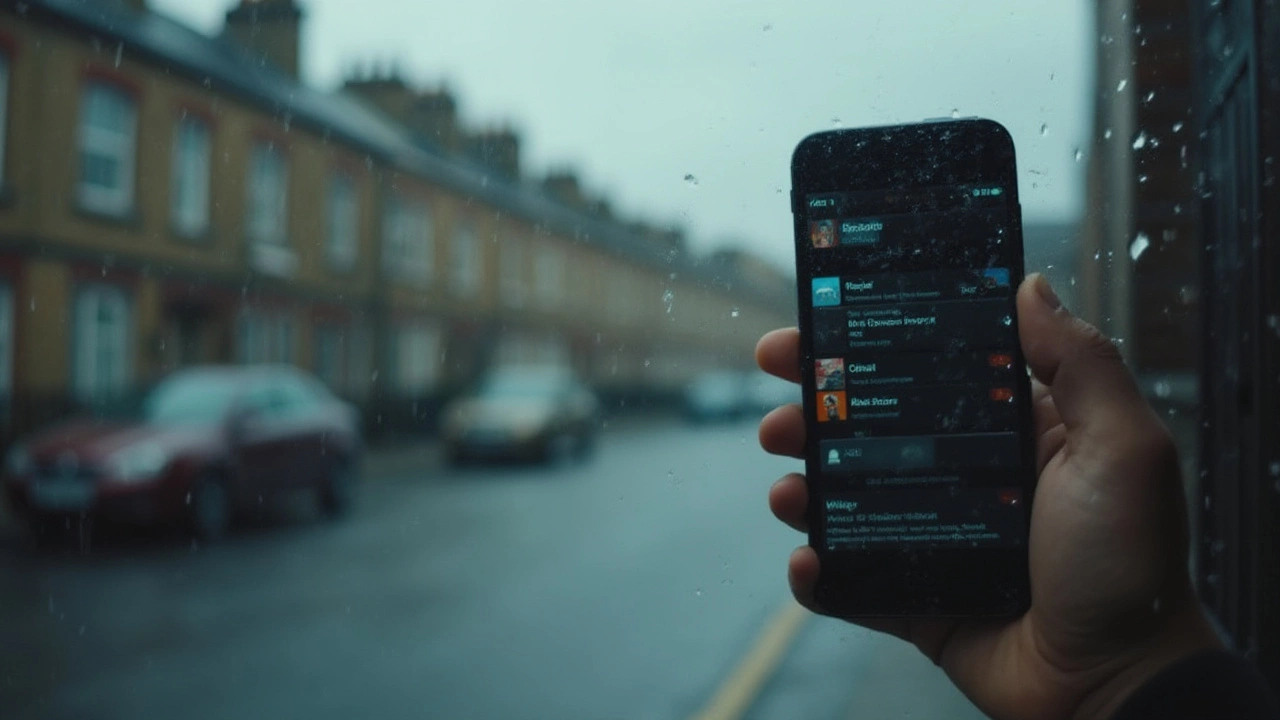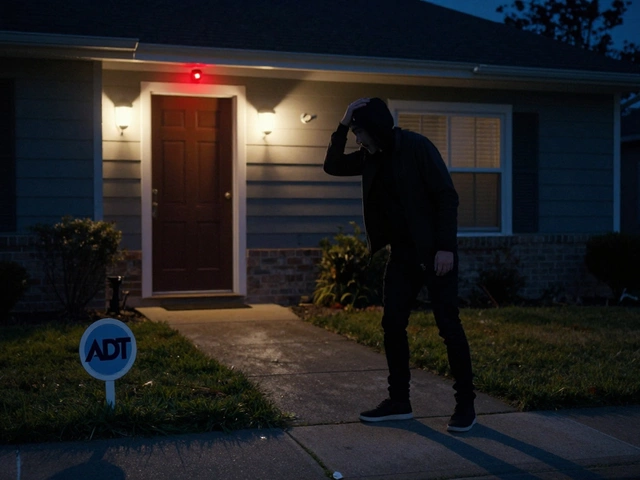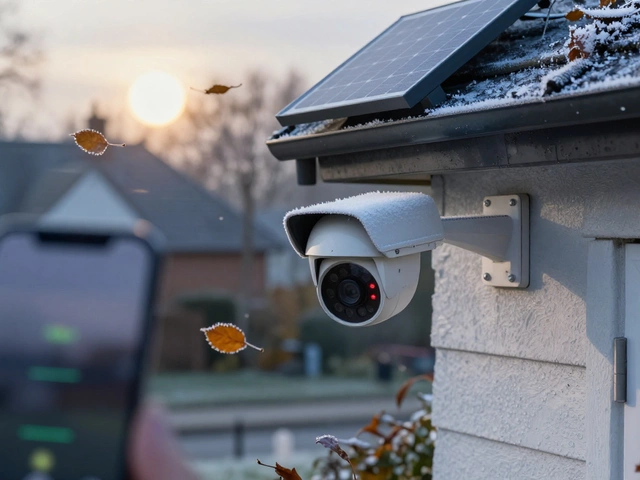Wireless security cameras promise a life less tangled—mount a camera anywhere, open an app, and bam, you’re a home surveillance genius. But hang on, the story doesn’t end with no more messy cables or expensive installation. There’s a flip side that folks only discover after shelling out for a set—or worse, after a break-in or blackout. Here’s why those cable-free, Wi-Fi wondercams sometimes leave you less protected than you think.
The Hidden Drawbacks of Wireless Convenience
Wireless security cameras look easy on the surface. Screw it onto a wall, connect it to Wi-Fi, and you’re good. Except, the connection is the first Achilles heel. A 2024 report from Consumer NZ showed nearly 35% of wireless cameras dropped their signal at least once a week during real-world household tests in Wellington’s variable weather and old wooden homes. Concrete or brick? Forget about “perfect coverage”—even your smartphone struggles there. The reality is Bluetooth and Wi-Fi signals hate solid barriers, and once you start adding distance, the likelihood of your camera going dark jumps.
Then there’s interference. The average New Zealand home has a half-dozen devices screaming on the same airwaves: TVs, routers, laptops, even your neighbour’s Wi-Fi mesh. When your wireless camera has to fight for a clear signal, it can freeze or miss motion alerts completely—a big deal if you want footage of who nicked your kayak from the shed.
But the most frustrating daily problem? Battery life. Lots of sellers gush about "months" of use, but real insights from Reddit's home security threads show complaints about cameras needing a recharge or battery swap every three weeks—especially outdoors where wind, rain, and cold chew through batteries faster than a toddler with fresh crayons. You forget to charge it, you’ve got an expensive plastic brick that records nothing.
Now add in uploading delays. Cameras promise "real-time" alerts, but when data has to go up and down through cloud servers—often hosted far overseas—it’s common for footage to lag by 10 seconds or more. That can be the difference between seeing a suspicious stranger and catching only their blurry shoes. If you’ve ever cursed your spotty Netflix stream, expect the same for your live security feed, just with way more at stake.
Security Risks: Hacking and Data Privacy
Here’s where things get uncomfortable. Wireless means your camera isn’t just easier for you—hackers are fans too. In early 2024, cybersecurity outfit CyberRiskNZ found that 60% of budget wireless cameras tested had easy-to-guess default passwords—“admin”, “123456”, or just blank entries. Got a camera brand from an online mega-mall? Odds are someone in Russia or Brazil has a password list to match.
Most people don’t touch the settings. Many never update the firmware. This leaves doors wide open for hijacking. Researchers at Massey University proved in a controlled test that with simple Wi-Fi sniffing software, a crook could intercept the live stream or disable a camera within minutes. Real hacks have hit Christchurch and Auckland homes, taking over baby monitors and backyard cams, livestreaming to creepy corners of the internet.
Even “secure” brands aren’t immune. Updates are only as fast as the manufacturer makes them—and if a brand goes bust, no more updates. Then there’s the issue of streaming your home feed through the cloud. If a company suffers a data breach, like the infamous 2023 U.S. camera company hack that exposed thousands of private feeds, it’s not just your doorbell you’re sharing with the world. Footage of your living room, your kids, your comings and goings—private becomes public if someone gets sloppy with server security.
If you must go wireless, use a unique, tough password for every camera. Check for firmware updates regularly—set a monthly reminder. And if you can, avoid cameras that require cloud accounts, or at least pick a provider with a solid record and local data hosting. Remember, convenience for you should never mean convenience for thieves.

Weather, Signal Blackouts, and Power Issues
Wireless cameras sell the dream of being able to put protection absolutely anywhere. On a shed, a fencepost, the weird nook above your garage. But reality bites, especially outdoors. Rain, frost, and sudden cold snaps can kill battery life. And few things make you feel dumber than noticing your camera died right before the storm—or before someone tried your back door.
If your Wi-Fi goes down in Wellington’s infamous gusty weather (or when Chorus is doing line work down the road), so does your video. Power cuts? Most wireless cams need either sunlight (for tiny solar panels) or batteries. If you’re not obsessive about charging or you go away for more than a couple weeks, you’re risking gaps. Security specialists in New Zealand recommend integrating any camera into a backup battery or local recorder—trickier and more expensive, but at least you’ll have footage if your main line goes out.
Then there’s local wildlife and, frankly, bored teenagers. Birds—especially cheeky tui or magpies—are infamous for knocking cameras off small mounts. More than one Wellington backyard has lost its camera to a curious possum or a flying rugby ball. Wired cameras usually have sturdier hardware; wireless ones tend to be lightweight, which is great for mounting but terrible for resisting a determined animal or an opportunistic thief.
Signal range is often overstated by brands. A camera promising "up to 100m range" might struggle at 20m if you have thick walls. Test every spot before committing. A good trick? Take your phone or a Wi-Fi analyzer app to the exact spot. If your phone’s signal is poor, your camera won’t do much better.
| Feature | Wireless Camera | Wired Camera |
|---|---|---|
| Signal Interference | High (from Wi-Fi congestion) | Low |
| Battery Life | 2-12 weeks, seasonally variable | Irrelevant (plugged in) |
| Hack Risk | Higher, exposed to Wi-Fi exploits | Requires network physical access |
| Footage Reliability | Depends on internet connection | Usually stored locally, less data loss |
| Placement Flexibility | High—up to Wi-Fi range | Limited by cable reach |
Tips to Minimize Wireless Camera Weaknesses
So, are wireless cameras all bad news? Not if you know the ropes—most people just install and hope for the best. If you’re going this route, start by buying quality. Don’t be swayed just by low prices and easy setup. Look for brands that have regular firmware updates and actually answer support emails or calls.
Placement is half the battle. Put cameras where they’re sheltered from rain, direct sun, and animal temptations. Bring them indoors for battery charging on a schedule so you’re not caught short. Seriously consider indoor units that run on mains power if you’re worried about downtime.
Boost your home’s Wi-Fi. Modern mesh routers help even out those dead spots—so if you have an outbuilding or a long driveway, mesh can be a game-changer. Test signal strength where you want coverage before you buy. No point putting a camera there if the only thing it records is "network error." Mounting a cheap Wi-Fi range extender on a shed or garage wall near the camera can keep things running smooth, especially during busy Christmas shopping or streaming season when everyone’s online.
Lock down your accounts. Change default passwords as soon as you set up your cameras. Use a password manager and two-factor authentication where available. Disable UPnP (Universal Plug and Play) on your router to stop random devices from opening network doors for hackers.
Think about getting at least one wired camera or a local video recorder as backup. That way, when weather, hackers, or dead batteries strike, you still have real proof—not just an empty slot where a file ought to be.
Nothing is 100% foolproof. But extra effort on setup makes wireless cameras a lot less likely to let you down when it counts. The dream of "hands-off security" is fun, sure, but it takes some old-school thinking to keep tech from turning traitor.






